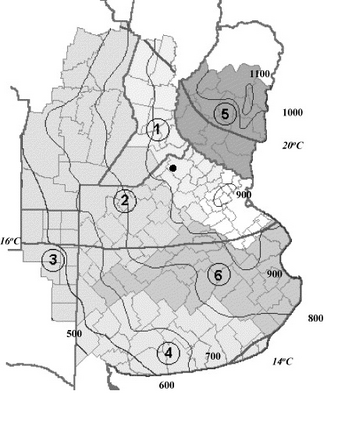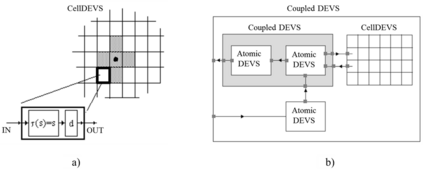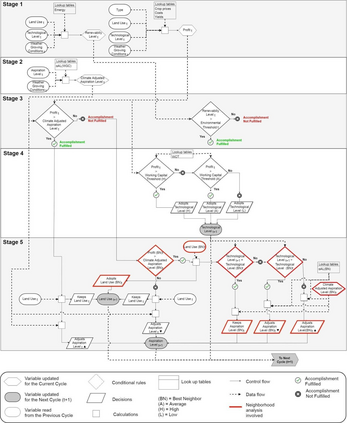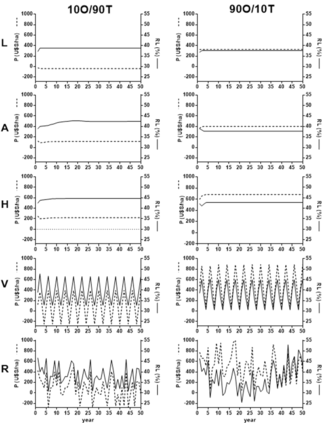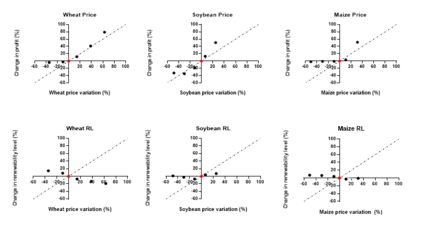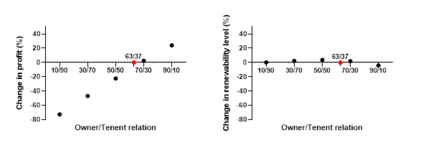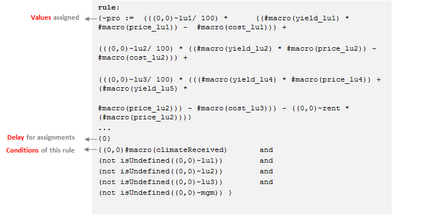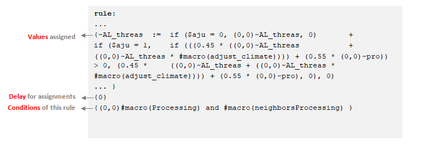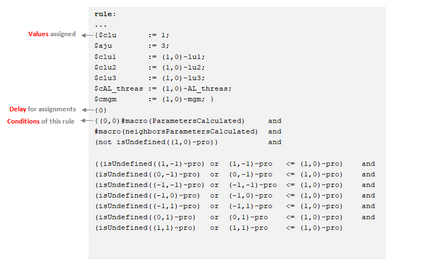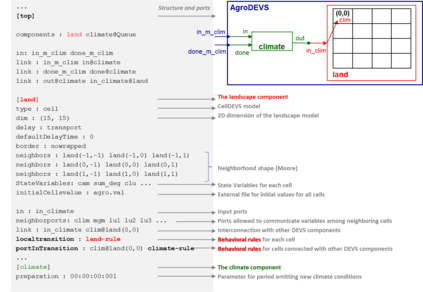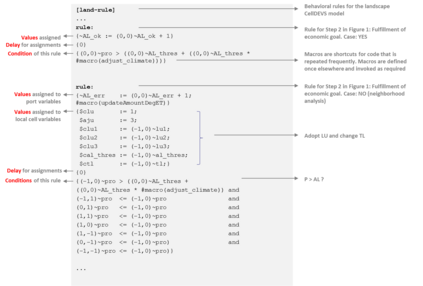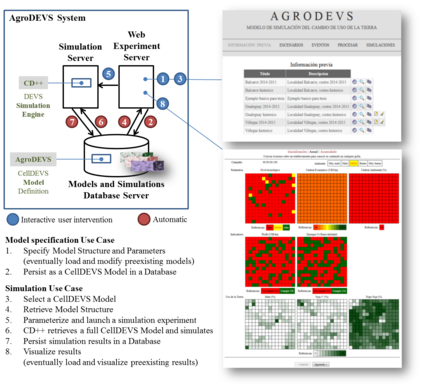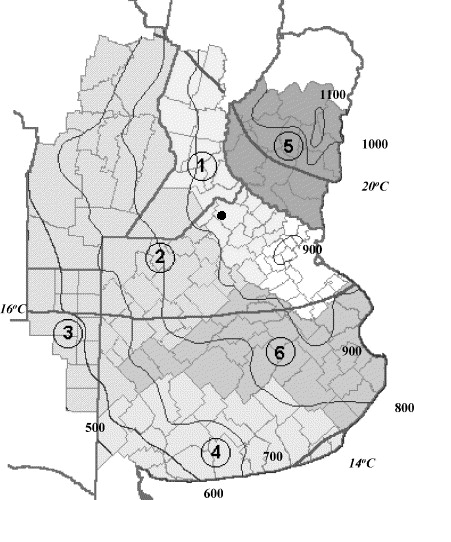Agricultural systems experience land-use changes that are driven by population growth and intensification of technological inputs. This results in land-use and cover change (LUCC) dynamics representing a complex landscape transformation process. In order to study the LUCC process we developed a spatially explicit agent-based model in the form of a Cellular Automata implemented with the Cell-DEVS formalism. The resulting model called AgroDEVS is used for predicting LUCC dynamics along with their associated economic and environmental changes. AgroDEVS is structured using behavioral rules and functions representing a) crop yields, b) weather conditions, c) economic profit, d) farmer preferences, e) technology level adoption and f) natural resources consumption based on embodied energy accounting. Using data from a typical location of the Pampa region (Argentina) for the 1988-2015 period, simulation exercises showed that the economic goals were achieved, on average, each 6 out of 10 years, but the environmental thresholds were only achieved in 1.9 out of 10 years. In a set of 50-years simulations, LUCC patterns quickly converge towards the most profitable crop sequences, with no noticeable tradeoff between the economic and environmental conditions.
翻译:农业系统经历了由人口增长和技术投入强化驱动的土地使用变化,这导致土地使用和覆盖变化动态(LUCC),代表复杂的地貌转型进程。为了研究LUCC进程,我们开发了一个空间清晰的代理模型,其形式为与细胞-DEVS正规化一起实施的细胞自动模型,由此形成的名为AgroDEVS的模型用于预测LUCC的动态及其相关的经济和环境变化。AgroDEVS的结构采用行为规则和功能,代表:(a) 作物产量,(b) 天气条件,(c) 经济利润,(d) 农民偏好,(e) 技术水平的采用和(f) 基于体现能源核算的自然资源消费。利用1988-2015年期间来自Pampa地区典型地点(阿根廷)的数据,模拟结果表明,平均每10年实现6年的经济目标,但环境阈值仅在10年的1.9年中实现。一套50年的模拟中,LUCC模式迅速接近最有利作物序列,在经济和环境条件之间没有明显的贸易。

